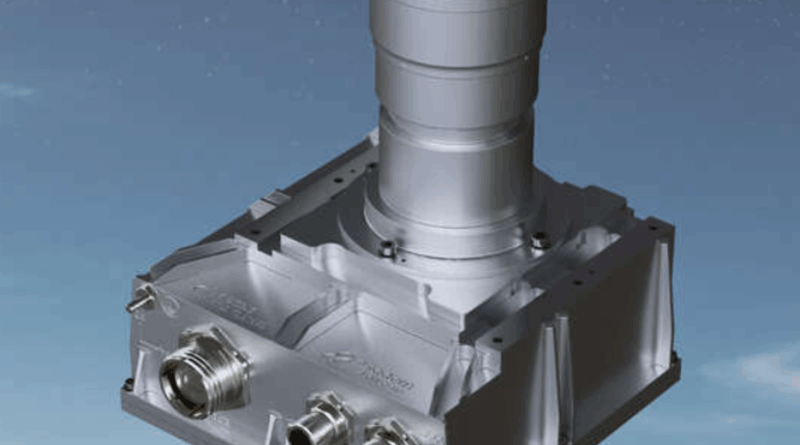SODERN PRESENTS ASTRADIA, A DAYTIME STAR TRACKER FOR A RELIABLE AND ROBUST NAVIGATION SYSTEM
Sodern is pleased to announce the commercial launch of Astradia: a daytime star tracker capable of aiding navigation systems, making them independent of GNSS radio-navigation signals.
After several years of research and development, Sodern produced Astradia, an endo-atmospheric star tracker that, when combined with an inertial navigation system (INS), provides daytime and nighttime attitude measurement to guarantee precise, robust, and reliable onboard geo-positioning data.
This high-performance tracker is thus autonomous, no longer reliant on radio navigation signals, and aims to counteract the natural drift in inertial navigation systems. It also offers the advantage of emitting no waves, which could otherwise expose an aircraft to detection.
Unlike satellite-based GPS systems, a combined “inertial unit/tracker” navigation system offers reliable absolute Position, Navigation, and Timing (PNT) measurements.
Most geo-positioning systems today have the drawback of being extremely vulnerable because they use technology based on satellite radio navigation signals (GPS, Galileo, etc.). These geo-positioning services can not only be scrambled or temporarily jammed but can also be easily deceived into generating false data.
With Australia, Sodern proposes an entirely new technology for civil or military aircraft that requires a reliable system or needs to maintain stealth by not emitting any waves.
Astradia benefits from the extensive in-flight heritage of Sodern’s star trackers and high-performance resources such as its certified calibration benches.
Astradia is the fruit of Sodern’s know-how and a proven cutting-edge technology. Astradia benefits from the legacy of several thousand star trackers already in service in space, along with a star catalogue and proven detection algorithms. This technology has also undergone conclusive in-flight testing.
“At Sodern, we are proud to design dual-use technologies that require both precision and robustness to meet the specific needs of the armed forces, allied with an industrial design to help optimize costs. Astradia is a very good example of this and will be of interest to civil and military aircraft operators” states Sandra Feilles, Head of Innovation and Programs.
Australia, a tracker specifically designed to meet the needs of both civil and military aircraft operators.
Astradia is compact (176 mm x 185 mm x 207 mm) and weighs less than 3 kg. It was specifically designed for easy integration on all types of aircraft. This optimized design makes Astradia ideal for a wide range of applications, including drones and surveillance aircraft. Its monobloc design and easy integration make it a versatile and practical choice for various aerial missions.
High-precision tracking capacity
Astradia offers tracking capacity to within a few arc-seconds, equivalent to 1 meter at a distance of 70 km. This function, which is extremely useful for aligning inertial navigation systems or their registration during missions, also opens the door to future applications with particularly demanding tracking requirements.
During the day and at night, this sensor delivers measurements to the aircraft every second without interruption, providing operational capacity at any point on Earth, including over oceans, with no need to update maps or charts to carry out the mission.
This sensor effectively reduces navigation drift during long flights and, more generally, improves the security of in-flight positioning.

